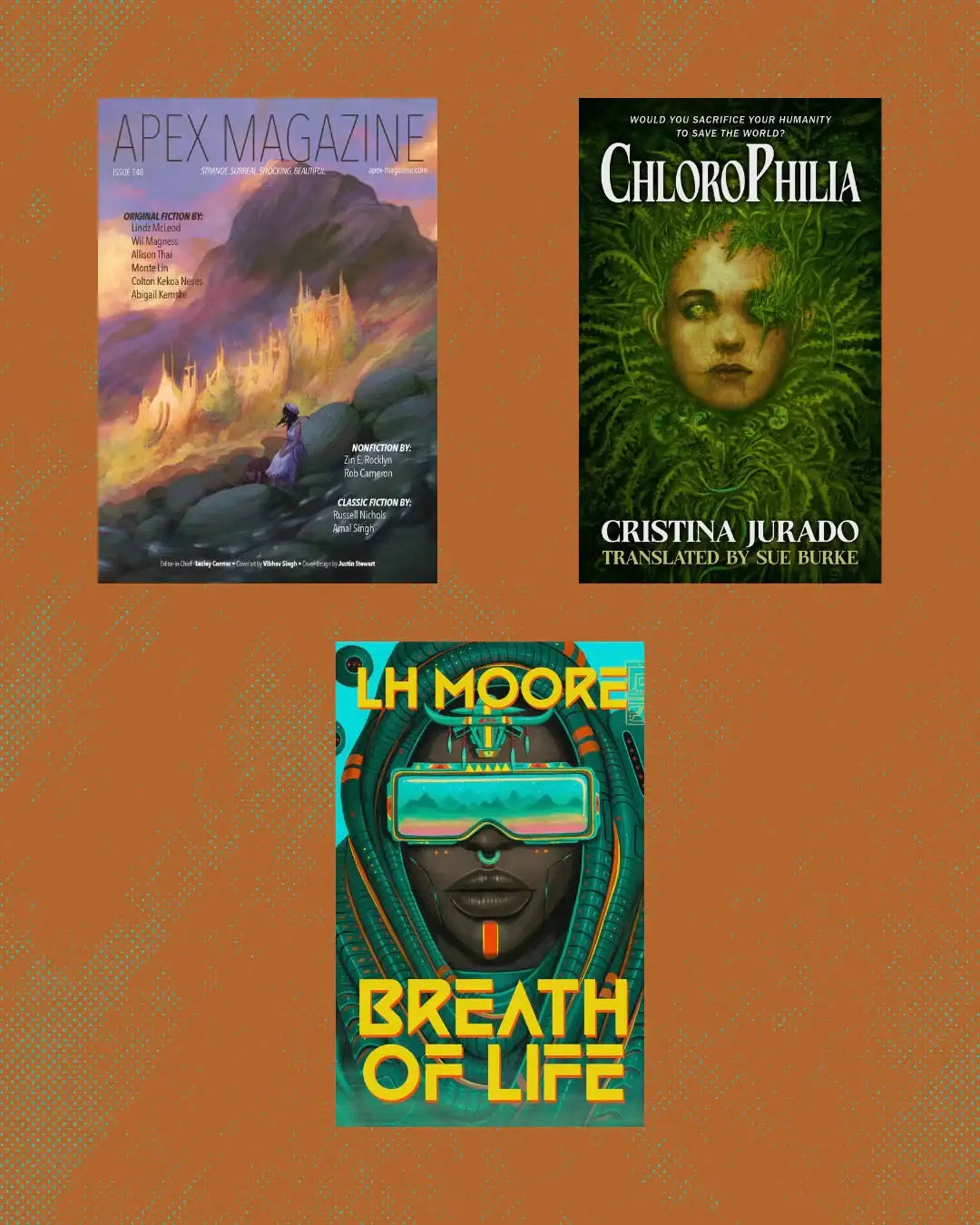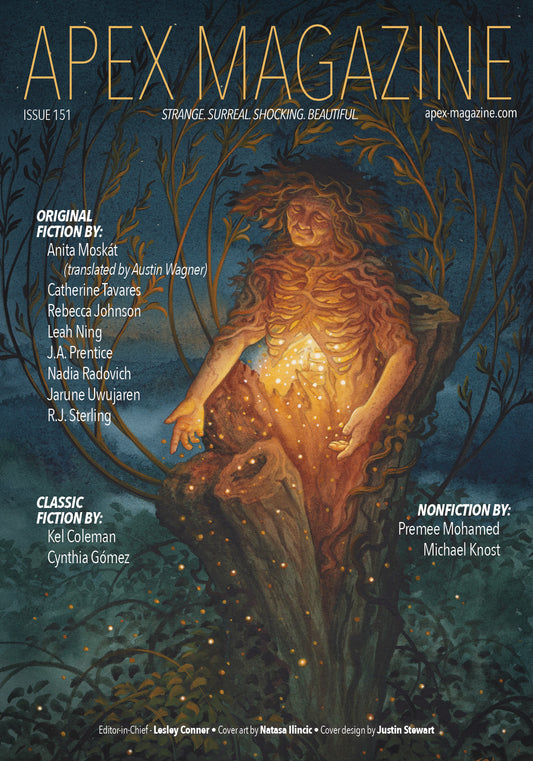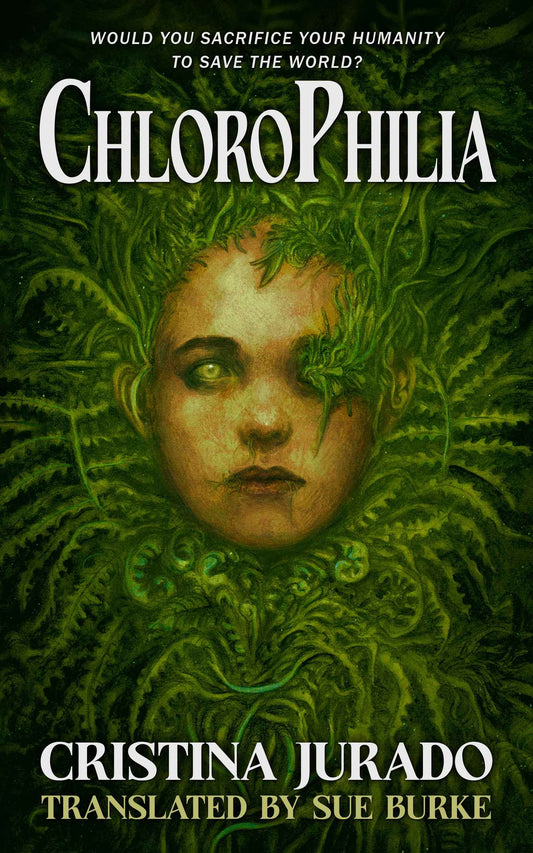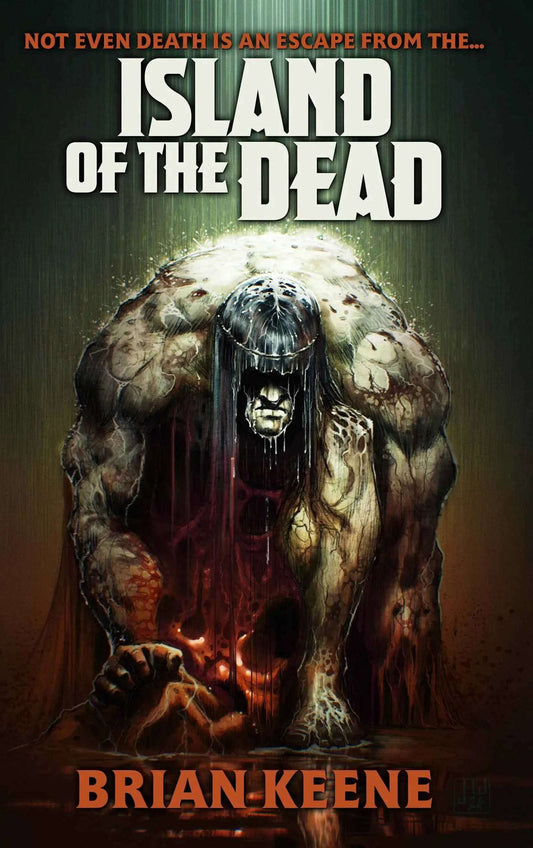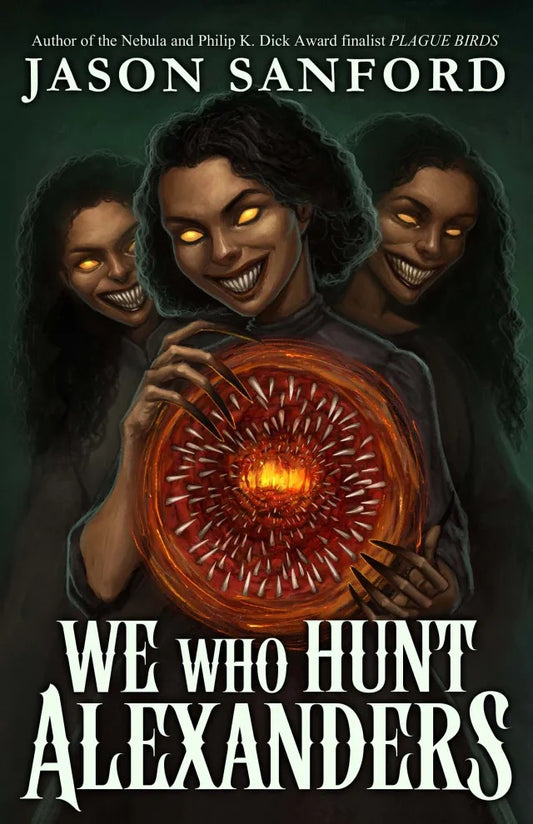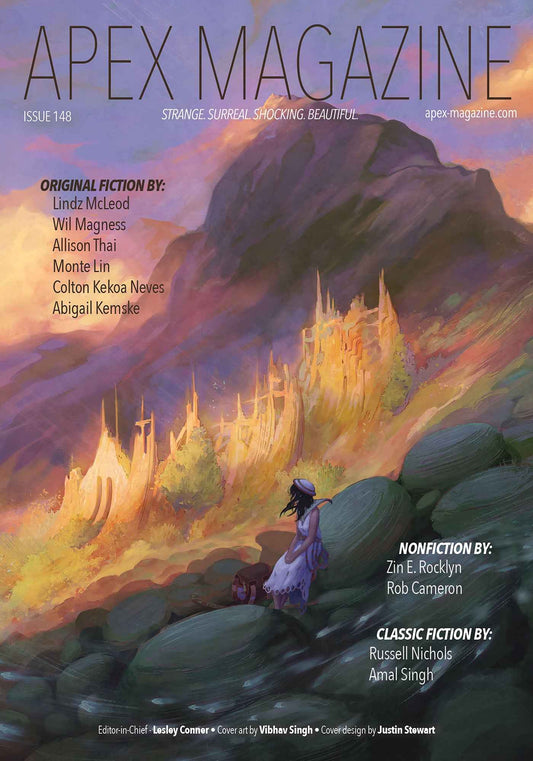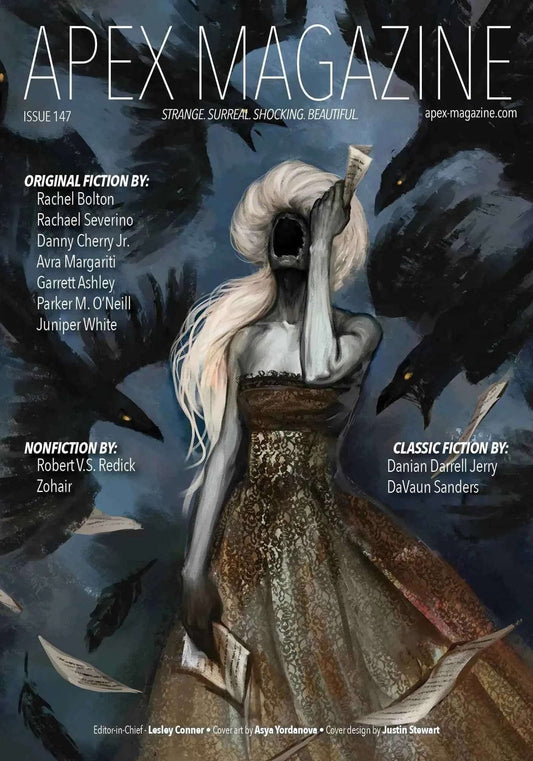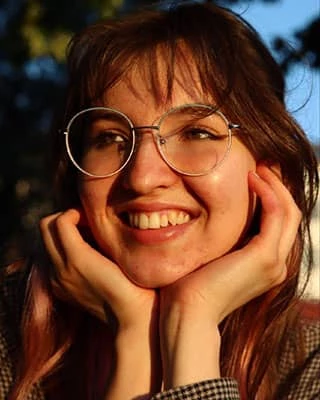
Vibhav Singh is an art director, illustrator, concept artist, and co-founder of collaborative animation studio, Studio Sideline. His work exhibits a strong sense of atmosphere and movement throughout many forms including but not limited to album covers, book covers, animation, and digital painting. Welcome to Apex Magazine, Vibhav!
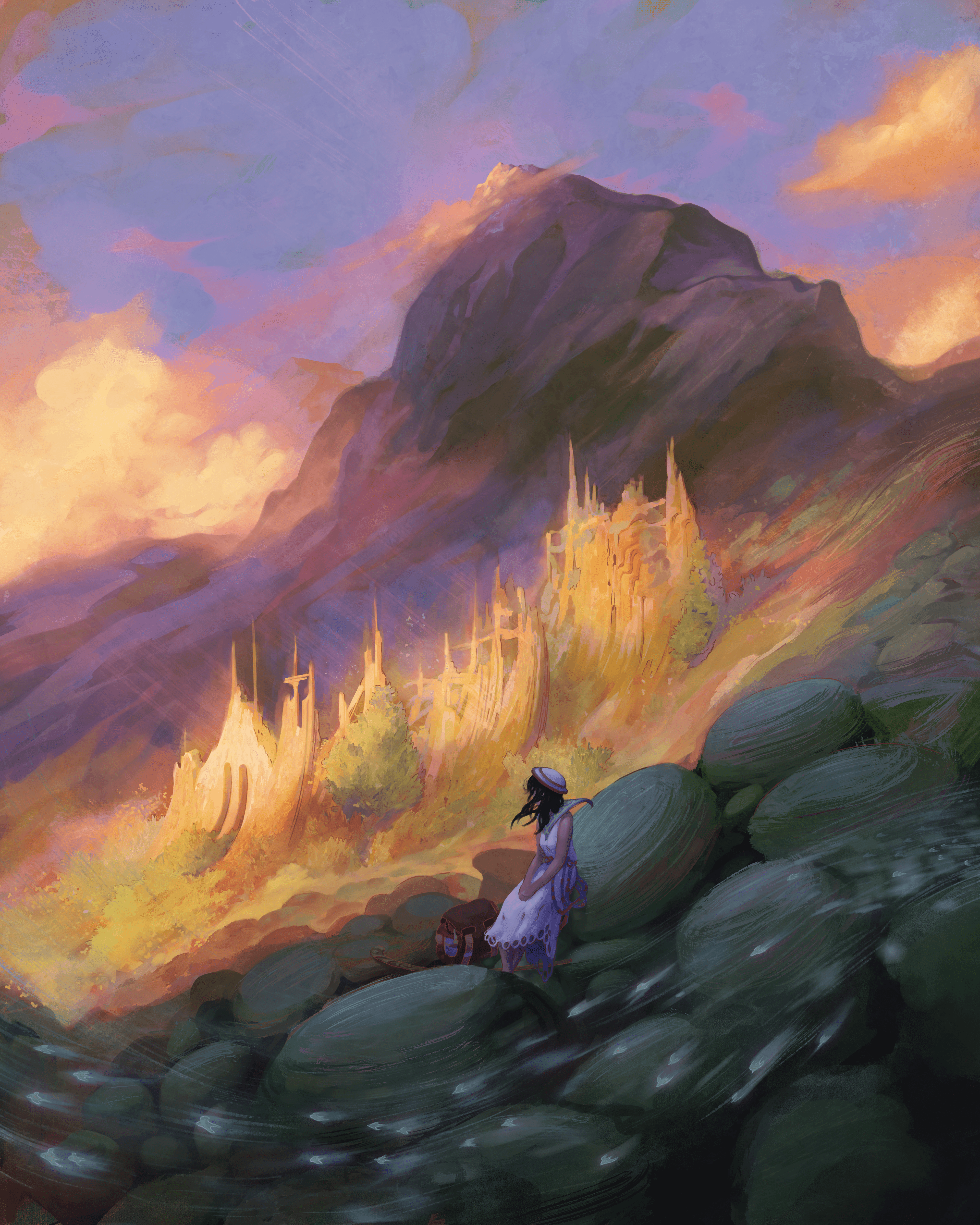
BRADLEY POWERS: In this month’s cover piece, there is such a strong sense of movement that even though it’s a still image one can imagine what an animated version might look like. You can almost feel the wind blowing and hear the leaves rustling. How did you first get into animation? What sparked your interest in it?
VIBHAV SINGH: I developed an interest in animation back in high school, through Ghibli and Pixar films of the time. But back then it was simply a vague desire to be a part of the animation world. It was only much later, well after college and a couple of years into my career as an illustrator, that I started taking a more serious interest in the medium. Fueled by my interest in cinema and illustration, and a newfound love for anime, I decided to try and find my own voice in animation.
The sense of movement that you mention is I think a direct result of my experience as an art director in animation. I try to depict these moments frozen in time, in an attempt to make them feel like snapshots of something much larger.
BP: What are some of your favorite works of art that have inspired your own work?
VS: Here are some notable pieces that I’ve found truly inspiring over the years:
- Spin The Dawn by Elizabeth Lim, cover art by Tran Nguyen
- James Jean’s poster work for Shape of Water, Blade Runner: 2049, and Pinnochio
- Shaun Tan’s silent graphic novel, The Arrival
BP: You’ve made a lot of album covers for musical artists, which seems like such a fun type of project to work on—to visualize the feeling of a song or album. How did you get into creating album art and how has it changed your overall artistic practice?
VS: It started back in my second year of college. I had just set up an Instagram account, and was still in the process of finding my voice as an illustrator when I decided to start this series called “From The Jukebox”. It was a simple idea, where I took music suggestions from my followers (mostly students from my college) and created illustrations inspired by the music. It was honestly one of the best things I’ve done for myself, as it helped me develop an identity as an illustrator—merging my interest in sci-fi and fantasy with the art of album covers and gig posters—which in turn made me stand out. The series caught the eye of many, including some indie musicians in the country. Following that I worked with organisations like Sofar Sounds, and popular Indian indie musicians like Anuv Jain, Tejas Menon, Swarathma, and Achint Thakkar, cementing my name as a cover artist in the industry.
Cover art for music is still one of my favourite kinds of projects, honestly. It’s incredibly freeing as there are no pre-existing visuals to work off of. Most of the time it simply comes down to nailing the feeling of the song. The possibilities for interpretation are endless. It has helped my art become more about making the viewer feel a certain way, and less about representing specific activities.
BP: Each of your works has a strong feeling to them, so much so that by viewing the piece you know what it would feel like to be in it. What techniques do you utilize to create such a strong visual voice?
VS: I always put a strong focus on atmosphere and lighting in my artworks, and I think that makes them all the more immersive. I also love playing with perspectives, camera angles, and composition to invoke a sense of space and depth, drawing a lot of inspiration from cinema.
BP: You are a co-founder of an animation studio called Studio Sideline. Comically, Studio Sideline writes that it is the outcome of the founders becoming distracted from “find[ing] their respective destinies and reclaim[ing] their lost purpose and identities.” How has creating this business and working on a diverse array of projects with other skilled animators benefitted you?
VS: It’s been an absolute joy, honestly. From the very beginning the ethos behind Studio Sideline was collaboration, and going from always working alone to working with three close friends was eye-opening to say the least. It gave me a new perspective on how much could be achieved when you put together a team of people skilled at adjacent but slightly overlapping tasks, and let them play to their strengths while covering for each others’ weaknesses. It also, very early on, helped me gain experience in leading large projects, which led to me realising my directorial potential, proving to myself that I don’t need to be limited to one medium to be able to express myself as an artist.
BP: Describe your dream project.
VS: I think I might have multiple dream projects. I’d love to art direct a big animation production or video game, direct a short film with a team of talented animators and artists I’d like to work with, or even have a gallery show of my paintings some day, to name a few!
BP: Vibhav, your work and passion for what you do are truly inspiring! Thank you so much for sharing your story with us. If you’d like to see more of Vibhav’s work check out his Instagram, as well as Studio Sideline’s Instagram and website.
